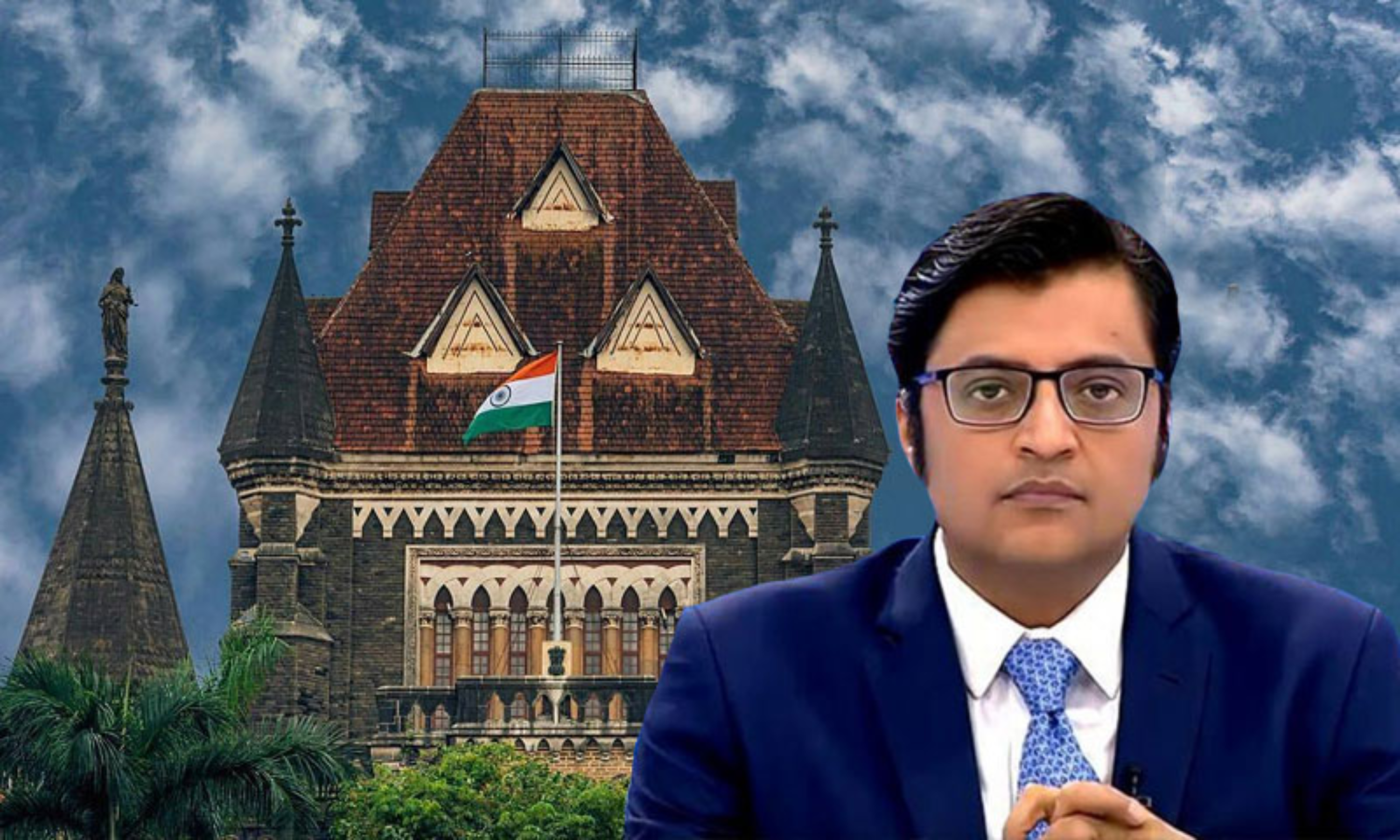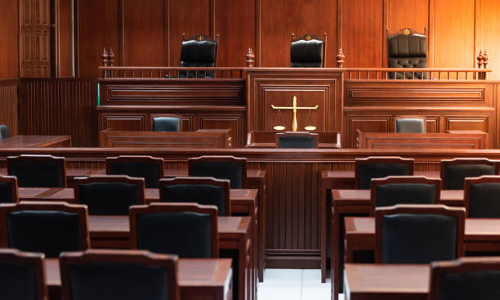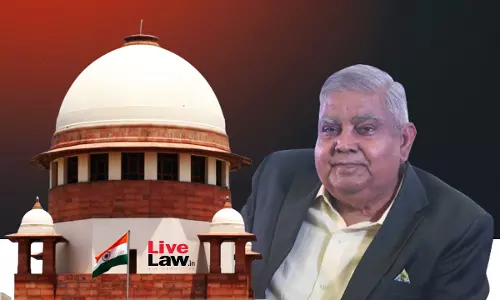Free Speech Or Hate Speech: A Critique On Bombay HC Order In Arnab Goswami's Case

Republic Television has been a vociferous supporter of the current political dispensation. In this endeavour, they effortlessly mix fact and fiction. Two recent programmes, anchored by Arnab Goswami, have given rise to important legal issues. The first programme anchored by Goswami insinuated that the protest by migrant labourers, who had gathered in Bandra with hopes that transportation...
Republic Television has been a vociferous supporter of the current political dispensation. In this endeavour, they effortlessly mix fact and fiction. Two recent programmes, anchored by Arnab Goswami, have given rise to important legal issues.
The first programme anchored by Goswami insinuated that the protest by migrant labourers, who had gathered in Bandra with hopes that transportation to return would be made available, were not genuine. He further insinuated that the protest appeared to be a religious gathering, orchestrated by political groups to endanger public health and peace, amidst the Lockdown.
In his second programme Goswami argued that an Opposition Leader would be reveling at the deaths of two Sadhus, since they were Hindus. He suggested that because of her religion and country of origin, the Opposition Leader would be happy with the lynching and would look for approval from a foreign country.
First information reports (FIRs) premised on the above programmes were filed in several police stations against Goswami, Editor in Chief of the Channel. He approached the Courts, looking to quash these FIRs on the grounds that the allegations were a result of malafide intent, and that the statements made in the programmes ought to be protected under the constitutional right of free speech.
Briefly, the FIRs seek to argue that Goswami, through his speech, sought to promote enmity and ill-will between different groups on the basis of religion, residence etc.( punishable under Section 153A of IPC). Further it was alleged that his speech imputed that a person/persons belonging to a certain religious/linguistic group etc. cannot bear allegiance to the Constitution or uphold sovereignty/integrity of India (Section 153B of IPC). It further states that Goswami, with malicious and deliberate intent, outraged religious feelings and insulted religious beliefs of a class of Indian Citizens (Section 295A of IPC).
The Supreme Court's judgement in Manzar Sayeed Khan vs State of Maharashtra was cited by both the sides in the Bombay High Court. The High Court, in my view erred in its interpretation of the judgement by applying the principles of the judgement to Goswami's speech. The speech of the Petitioner was tested by the High Court on the following parameters:-
(a) Whether the speech shows prima facie intention of the Petitioner to create disharmony;
(b) Viewing the speech as a whole (context) and not seeing specific statements in a vacuum; and
(c) To judge the speech on standard of a reasonable courageous man/woman.
The Bombay High Court passed an order stating that prima facie there seems no merit in the allegations imputed in the FIR. This view of the High Court is legally problematic for the following reasons:-
(1) Unsubstantiated Allegations against a person premised on her religious identity and country of origin with the intention of creating disharmony as unlawful speech.
The FIR (No. 164 of 2020) alleges that Goswami's (Petitioner) speech on the Palghar incident was outside the ambit of free speech. Goswami, in a rant alleges, that the Leader of the Opposition Party sought affirmation from the country of her origin for this act of lynching. He repeatedly implied through statements that she is not Hindu but from another religion. He formed a set of accusations against an Indian citizen and an elected Member of the Indian Parliament for promoting lynching, premised on her religious identity and origin. In fact, the word Vatican was also used while referring to the Member of Parliament. He goes onto say that the lynching took place because the sadhus were Hindus and the same situation would not have arisen had they belonged to some other religion. He then intentionally went on to falsely allege that various news publications and activists chose not to criticise the lynching.
The Bombay High Court assumed the Petitioner's innocence by stating that the target was only Smt. Sonia Gandhi. The Court, overlooked the fact that she was not targeted in her role as a legislator. Smt. Sonia Gandhi is neither a Legislator from Maharashtra nor holds a portfolio in the State. The accusations made against her were purely based on her religious identity and country of origin. The Petitioner questioned her intentions premised on the assumption that she is prejudiced against the Hindu community.
The allegations against the Congress leader cannot be looked at as fair criticism of a legislator. The grounds for criticism taken on the show were not for her role as MP of Rae Bareilly or as the Leader of the Opposition. Her religious identity was made reason for her alleged apathy towards those in the Hindu community. Malicious accusations against a person with the intention of creating disharmony between religious groups cannot be seen as an expression of free speech.
(2) Unlawful Statements on record cannot be negated by plausible situations.
The Bombay High Court records that the Petitioner, when questioned by a panelist on the communalising of protests at Bandra, stated that he would do the same if it was another religious community. Thereafter, the Court seemed to reason that if the Petitioner would be consistent in his speech across religious communities then the Petitioner is not abusing his right to speech.
Two problems arise with this line of reasoning of the Court. Firstly, communal statements made 'equally' against various religious communities does not detract from the fact that such speech creates disharmony, and therefore, is not lawful speech. Secondly, speech already made on record ought to be tested in law within the framework of the FIR. The Court cannot seek to rely on a hypothetical situation to neutralise the legality of statements which form a part of the record.
(3) Speech not examined as a whole.
The nature of the speech in the programmes were not intended to ask questions to the administration in charge. In the case of Bandra, the intention was to question the intention of the protesters on religious grounds. While in Palghar the Petitioner's allegation was that an Opposition Leader supported the lynching of members of the Hindu religious community because of her own personal religious identity. The programme as a whole shows concerted intention of the anchor to spread an unfounded view in the public which creates enmity and insecurity amongst members of various religious communities. Further, the Court should take into consideration the fact that, the Petitioner's allegations are contrary to the investigation of the State police which has found no communal basis for the lynching in Palgarh.
This shows the malicious intention of the Petitioner. Wild allegations may fall under the ambit of free speech. However, specific unfounded assertions blaming people for lynching and violating public health requirements, in a pandemic, on grounds of their religious identity and their prejudice against certain religious groups, are not protected under the right to free speech. Allegations against a leader for not upholding the Constitution and causing damage to national integration because of her country of origin, also cannot be deemed lawful speech.
Free speech is a liberty which cannot be compromised. However, to use speech as violence against others' right to expression, life and peace cannot be seen as free speech.
Abhik Chimni is a Delhi based Lawyer
Views are personal only




